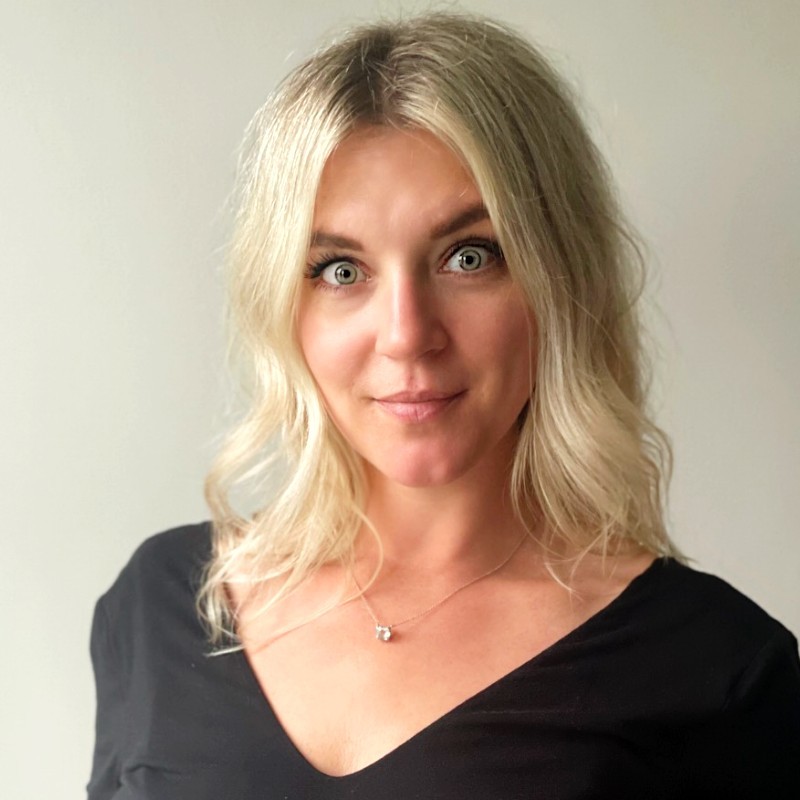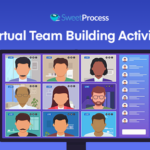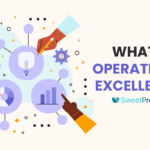Building an Efficient Project Management Team for Operational Excellence
Last Updated on March 8, 2024 by Owen McGab Enaohwo
The success of a project hinges on the contributions of the team.
As director of operations and project management at Ten35, a marketing agency, Janna Retzler built a project management team from scratch to enhance the organization’s operations. She accomplished this task despite the constraints of working remotely due to the COVID-19 pandemic.
In this episode of the Process Breakdown Podcast, the host, Dr. Jeremy Weisz, speaks with his guest, Janna Retzler, about her strategies for building an efficient project management team and growing the staff from 20 people to about 80 people in less than two years.
Listen to the audio interview
Subscribe for more business success stories
Key Resource List
SweetProcess— Sign up for a 14-day free trial. No credit is required.
Show Notes
[0:26] Intro
- Dr. Jeremy Weisz mentions some of the past guests who have been on the show including David Allen of Getting Things Done, and Michael Gerber of the E-Myth.
- Dr. Jeremy Weisz introduces SweetProcess, a workflow tool that helps businesses to streamline their operations even in life-or-death situations.
- SweetProcess offers a 14-day free trial without a credit card.
[1:44] Dr. Jeremy Weisz introduces the guest, Janna Retzler.
[2:40] Janna gives an overview of what Ten35 is all about.
- Ten35 is a cultural marketing agency focused on working with the Black community, Latin community, LGBTQIA, women, and other underrepresented cultures in marketing and advertising.
[4:27] Janna talks about one of the first projects the team at Ten35 worked on when she joined the company.
- The team organized a big social media company for Black history month within two months.
- The event was very successful and it set the pace for her role in the company.
[5:52] How do you kickstart a project management department?
- Janna joined the team in November 2020, during the COVID-19 pandemic, working remotely.
- She hired a small team of project managers and then created processes for the team to function efficiently.
[7:31] Janna talks about how to build an efficient project management team.
- You need to take the time to hire the right people and not rush the process.
- As your team grows, you need more project managers to manage the growth.
[8:30] At what point does an organization create a project management department?
- When the volume of work increases in your organization, you need to consider creating a project management department.
- A business needs a defined project management team to resolve its growing pains.
- The biggest part is to be flexible and adaptable to the needs of the organization and the projects.
[11:20] Janna explains the structure of a project management team.
- The project management teams at Ten35 have account director VPs, account directors underneath the VPs, senior account directors, account supervisors, account managers, and coordinators.
- Each team has a project manager who reports to Janna as the head of the project management.
[14:13] What’s the structure of the meetings between Janna and the project managers?
- Janna has one-on-one meetings with the project managers every two weeks for 30 minutes.
- Every meeting has an agenda. She focuses on closing out the meetings, outlining the next steps, deliverables, and deadlines.
- The roles and responsibilities of team members are clearly defined at the meetings.
[17:29] Janna gives insights into the template of her meetings with the project managers.
- The team outlines the discussion points for the meeting in the template.
- The team leaves the last column empty for taking notes.
- The meeting notes serve as a point of reference for team members.
[18:54] What project management tools does the team at Ten35 use for communicating with clients?
- The team uses Slack for internal communication and Basecamp for communicating with clients.
- They use Webvantage for task delegation and management.
- The team also uses Master Project Spreadsheet, a tool Janna developed for client engagement.
[21:32] Janna talks about the biggest lesson she learned from setting up the project management department at Ten35.
- Ensure that the tools you adopt meet your specific business needs.
- People are resistant to change so you have to be prepared to communicate the “why” and the benefits of adopting new tools.
[23:25] Dr. Jeremy Weisz asks the audience to check out https://ten35.com/ to get more information about the organization’s services.
[23:45] Janna advises on the best ways to streamline the employee onboarding process.
- Janna had some challenges with onboarding when she started the role, especially as the team was working remotely.
- You need to have a solid support team on the ground to enhance the onboarding process.
- Be well prepared for the onboarding process and schedule the various activities ahead.
- Keep open communication with your team to know the people you have to onboard and when to do it.
[26:15] Outro
About Janna Retzler

Janna Retzler is the senior director of operations and project management at Ten35. With more than 15 years of experience in marketing, she has worked with Fortune 500 companies and promising startups on various integrated projects.
Janna is a people person interested in building healthy relationships with colleagues and clients. A natural leader, she has a good judgment for making decisions.
A process-oriented team player, Janna’s specialties include planning and strategy, app development management, and digital marketing and strategy.
Transcript of the interview
Speaker 1: Welcome to the Process Breakdown Podcast, where we talk about streamlining and scaling operations of your company, getting rid of bottlenecks and giving your employees all the information they need to be successful at their jobs. Now, let’s get started with the show.
Dr. Jeremy Weisz: Dr. Jeremy Weisz here, host of the Process Breakdown Podcast, where we talk about streamlining and scaling operations of your company, getting rid of bottlenecks and giving your staff everything they need to be successful at their job. I’m here with Janna Retzler of Ten35. I always tell people what other episodes people should check out. There’s a lot of cool episodes. So there’s one with David Allen of Getting Things Done. One with Michael Gerber of The E-Myth and just different COOs and directors of operations, so check them out. And this episode is brought to you by SweetProcess. And if you’ve had team members ask you the same questions over and over again, and it may be the 10th time you spent explaining it. There’s a better way, there is a solution, SweetProcess is actually a software that makes it drop dead easy to train and onboard new staff and save time with existing staff.
Dr. Jeremy Weisz: I was talking to one of the owners, Owen, not only do universities, banks, hospitals, and software companies use them, but first responder government agencies use them in life or death situations to run their operations. So SweetProcess you could document all the repetitive tasks that eat up your precious time, your team’s time. So you can focus on growing. You can sign up for a free 14 day trial. No credit cards required go to sweetprocess.com. It’s sweet like candy S W E E T process.com, check it out.
Dr. Jeremy Weisz: I’m excited today. We have Janna Retzler, who is the Senior Director of Operations and Project Management at Ten35. First of all, you can binge watch like I did, go to their website, Ten35.com and click on their work, which is some of them Mountain Dew, Pepsi, General Mills. And there’s some amazing work that’s they do in the videos. And if you go to their website you’ll see, culture as a competitive advantage. And she has helped in a number of roles in her career from account supervision or production to project management, she’s worked with clients like TikTok, McDonald’s, Accenture and many others. Janna, thanks for joining me.
Janna Retzler: My pleasure. Thanks for having me.
Dr. Jeremy Weisz: We’re going to geek out. I love when I read the intro, when I say systems and operations, no other people besides COOs and Directors like smile, that’s like music to their ears, right? And we’re going to talk about that, but just start off, tell people a little bit more about Ten35 and what you do.
Janna Retzler: Absolutely. So Ten35 is based out of Chicago. We are a cultural marketing agency. So really focused on working with the black community, Latin community, LGBTQIA, women, all sorts of I would say underrepresented cultures in marketing and in advertising. And so I think one of my favorite things about what we do is we actually make a difference. We’re not just selling something, we are promoting how to get your small business off the ground rather than just, like I said, selling something random.
Dr. Jeremy Weisz: I love it. And you help companies do that, speak to everyone and diverse role. Man I remember when I went to your page, I click about, and I’m slightly ADD so I like scrolled past the red part with the… I’m like, "I want to see Janna before I talk to her" and I’m scrolling through the pictures before I read what that language said, and I’m like, "holy, they’re a diverse company". I mean, you could see every walk of life on that and then I scroll up and I’m like, " oh okay, it says we are 80% people of color", so I get it. So it is amazing. You got eat your own dog food and live it too.
Dr. Jeremy Weisz: So we’re going to talk about when you came on, you helped refine and start the project management department. We’ll walk through that, but I kind of want to start with, I don’t know, maybe one of the fun campaigns that you saw the company work on. I don’t know, when I look here, there’s a Mountain Dew, there’s a Pepsi. Is there a fan favorite with the company that you like to talk about?
Janna Retzler: Sure. So we did one for a giant social media company for black history month and it was very cool. We did a virtual environment. We had a partner that helped us develop that virtual environment. I think one of the very cool parts of it was we really rocked out this campaign in like two months. So we got the go ahead beginning in January, where we did all of our planning during that month. And then in February, we were all in execution mode for the entire month. So that one was really hit the ground running type of project, that was really just amazing and super fun. Brought the team a lot closer together and the clients were amazing. So it was so fun.
Dr. Jeremy Weisz: I love you saying that because it makes me think of the actual logistics have got to be a nightmare. And I don’t mean that in a negative sense, it’s just there’s so many moving pieces, especially when you’re dealing with celebrities and well known people and we need to execute on this. So that’s why we’re going to dig deep about the whole project management piece, because to execute that over a year is difficult, let alone a couple months seems like just a enormous undertaking. So when you step in, you’re like, "okay, I need to start this project management department". Where do you start?
Janna Retzler: So actually when I started, I started in November of 2020. So it was a very interesting time I think for the whole country. I did start remote and at that time I think we had probably 20, 25 people in the company. I was actually brought on to support one of our other social media clients. And I very quickly got the feeling that the role was much bigger than what everyone thought it was going to be. At that time I think we had just one project manager, like I said, I came in to support one of our clients and really quickly learned that I need to actually hire a small army of project managers and I have to create these processes and tools so we can efficiently run the company. So my role grew very quickly, I would say within two weeks, I was already doing things on an operations level rather than really ever running the project so that’s where it started.
Dr. Jeremy Weisz: And so now you’re like you get thrown in… I mean, I feel like this must be pretty common in like a project management or operations role, because if you are a details person, you realize how much actually goes into all of this. And maybe if you’re not like, "oh yeah, it’ll be fine, just run this project. Like, wait, I need these 1700 other steps involved". So you step in, you’re running the project, you realize, okay, we need a whole department for this. I mean, because you have to run the project too so then how do you start to build this out while you’re still executing on the project?
Janna Retzler: I mean, I think the main thing was I asked for a lot of patients while we got the team together, because not only was this particular client in need of a project manager, but also we have several other giant clients that didn’t have any project managers at all. So I would say because when I started, like I said in November, by December I think I had three project managers on the team and that has just since grown. Like I said, when I started we had about 20 people and right now we’re sitting at about 80. So just to match the growth of our clients and our team in general, we also needed a bunch more project managers. So now I have a team of about 10 PMs that work with us.
Dr. Jeremy Weisz: At what point do you… Because a lot of come start off, okay they hire a project manager, then they have a second, they have a third. At what point do you feel okay, we need really a department for this and managing it at that level.
Janna Retzler: I think it’s just when the work becomes… The work kind of tells you that it’s time for that. I think the idea all along was a department, whether it be smaller or a little bit bigger, that’s what we needed to learn. But I think we knew all along that it was going to be a department. And I think that has really benefited really everybody on the team and I hear all the time, we need someone for this, we need someone for that. So I think our worth has really been proven and we continue to grow because with any new department, there’s a little bit to growing pains, right. There’s not always a clear definition of what the account team does versus what the project management team does.
Janna Retzler: So we’ve had to define that a lot and refine it as we’ve grown and also there’s nuances everywhere. So some people need certain tools that other teams and people don’t need. So it’s still a learning process all the way around. And I think everybody’s comfortable with that. And as we see a new maybe task or a thing that a project manager can take on, or even the other way around maybe a production person or an account manager might be able to take, we do shift like that. So I think the biggest part is just being real flexible and adaptable to what the projects and the company are saying as a whole. I think that’s also a very important piece of the department is that we sort of sit in the central location of the company.
Janna Retzler: So we have account managers that are very specific on certain roles. We call them planets. So planets are really just a group of accounts and we have three of those. And so again, each of those run a little differently, but I think as we continue to get different projects and different teams together, we need to be very conscious of again, that centralized location so that our project management team and our operations team in general has our fingers in all the different areas of the company. And we have to do things consistently across the company because if a client ever comes to a different planet or if a PM ever moves to a different planet and our internal teams, they all need to be familiar with how things go. So process is a huge part of that.
Dr. Jeremy Weisz: Janna, talk to me about the structure for a second. So you could use any example in your head. It could be a Mountain Dew or Pepsi, give a sense of like, "okay, here’s how many project managers and above that, who’s helping this". And then like how does the breakdown of this department as far as hierarchy go?
Janna Retzler: Sure. So each of the planets, as I mentioned, has a group account director VP, running that kind of book of business. They also then have account directors underneath them, sometimes senior account directors just depending, then there’s account supervisors, account managers, sometimes account coordinators. And we really have a PM as a partner to the whole group. Most planets have two PMs, a couple of them have three. And so generally that’s the project makeup on the very basic level. Of course, we also have our creative team, our production team, strategy team, digital team, integrated communication. So all of them sort of have a similar structure, but really we just have one of those folks as a resource on the project from each of those departments. And then, like I said, our PM team sort of sits in the middle. So they do, if you will like live on a planet, but they report into me. So we do have that central location.
Dr. Jeremy Weisz: So each project manager will report to you as head of the project management.
Janna Retzler: That’s right and they also very closely work with their account directors. So it’s really kind of a dual leadership or mentorship for those PMs, not only with me as their direct supervisor, but also they do work much more closely with those account folks than they do with me. So I constantly have to check in with them, which in again, gives me a lot of insight into how the rest of the company is going, because I can see, for example, if someone’s having a challenge, I can say, well this other PM is a great resource to help with that because they just went through that with this project or whatever it is.
Dr. Jeremy Weisz: And is this situation is the point of contact for the other company, the client, the account director? Is that who the point of contact is?
Janna Retzler: Yes, so we really divide our account and project teams client facing, they’re both client facing, or they can be in most cases, but the account manager, account director will be the point of contact for the client. And then the PM is really in charge of moving the train along on the internal side. So they’ll coordinate with all those different departments, creative, strategy, all that.
Dr. Jeremy Weisz: I’m wondering the sexy topic of meetings, Janna. So I’m wondering how you structure the meetings, because I imagine there’s a lot of logistics, a lot of stuff, especially in your setting this stuff of the structure up and then even ongoing. What is the meeting frequency type length look like with you and the PMs? And then we got to talk about the PMs in their teams, but what about with you? How did you structure that?
Janna Retzler: Sure. So I definitely have in one on one meetings with all my PMs, some of them are once a week, if they are being onboarded or they’re new or they need some support in a certain way. But mostly I like to do it every two weeks. And really that’s just because I have like I said 10 PMs reporting to me. So I don’t have time to do it all in one week. And then of course I meet with these group account directors, the VPs, all the other department heads as well. And then our CEO, our finance team, we have regular operations meetings. So just all these together combined with any new business that comes in or actual project that needs my attention.
Janna Retzler: So really it is like I said, 30 minutes with my PMs once or twice a week, 30 minutes with VPs and group account directors every other week. And then, like I said, just finance operations. Most of the meetings I do run, so I’m on camera a lot of time and I develop agendas like every day I actually always have them up and just throw stuff in them as I see them come about. But that’s definitely one thing that I have instilled on the PMs is that every single meeting has an agenda. We have a template for it. Again, consistent template is going to be key for our internal teams and our clients so that everyone’s used to seeing the same stuff.
Janna Retzler: And really, I think people would say that I’m most known for closing out the meeting, next steps, deliverables, deadlines. When are we meeting again, things like that. They always pause at the end and if they’re speaking, they’ll even interrupt themselves to say like, "I’m sure Janna has the next steps we need to talk about". So I’m kind of known for that.
Dr. Jeremy Weisz: Which is important. It’s like the follow up. So it’s not like a waste of time. It’s like just to meeting to have a meeting.
Janna Retzler: Exactly. You have to have like, what’s next? What did we get out of this? Many times there’s a recap of like, okay, cool. Here’s what we talked about. Here’s the things that we have to tackle next. Also roles and responsibilities is huge because like I said, we have tons of different departments and people touching a lot of things. We also work on a lot of fun stuff. So we have a culture committee that we do a lot of different activities for. We’ve recently done some things with Hispanic heritage month where we had one of the Ted Talk speakers come for a lunch and learn. We also do things with LGBTQIA probably I would say once a month or once every other month, we also have done some like taro and astrology. So really fun, but that’s really important too, because those are kind of just volunteers jumping in to do what they can. So even if it’s a creative person, they might be looking for a DJ on one of those things. So always recap with who’s doing what.
Dr. Jeremy Weisz: Walk me through a little bit about… I love that you have this structure to the meeting which is important, so there’s no guesswork and you could be really efficient with everyone’s time and respectful. What does that look like? An example agenda? Not necessarily specifics, but you said there’s a kind of a template of things you want to run through.
Janna Retzler: So we have a template for an agenda. It’s kind of like, what’s the item that we want to talk about what are the discussion points? And then the last column is left empty and that’s for kind of notes that we take through. One thing that I love about this template is that every time I have a new agenda for the same team, I just kind of put that new agenda on top of the old one so that we can look at those notes as we’ve progressed in the discussion and maybe look back for a point that we may have missed. And also it provides just one place for people to go to see what we’ve had discussion topics about and things like that and it’s always shared with the teams.
Janna Retzler: So that’s really the structure of the actual template, but really, I think the important thing too, is that at the end of each of those meetings, there’s kind of this open forum situation where, because I’m leading these and building the agendas and I don’t always get input for them. I just kind of take things as they come to me. I always like to give other people a chance to talk. And really most of the time when I do have these agenda topics, I’m kind of setting the stage for a further conversation rather than just like spewing out like this fact and that fact.
Dr. Jeremy Weisz: And then how do you deploy next steps of communication wise? I’m wondering, do you use like a project management tool? How do you communicate when you’re not actually on the meetings?
Janna Retzler: Exactly. So we do have many processes and tools that we use. We use Slack for internal communications. We also have Basecamp, which is really helpful for giving those, next steps and the to dos. We also use that with our client. So it’s really helpful there as well, but Basecamp has a nice feature where you can do things on the back end and then have the clients see only what they’re sort of ready to see. So those things, we also have a project management tool called Webvantage, where we put our tasks into the tool and then our teams are able to allocate the hours to those tasks and then really just do their time sheet directly from the tasks, so that’s very helpful. We also use Smartsheet, which is really the best tool I’ve ever used for creating timelines. I mean, I know there’s a million uses for it, but that’s my main and favorite way to use it-
Dr. Jeremy Weisz: So you could see the project itself and like what laying everything out.
Janna Retzler: -high level. And then also things change so quickly that Smartsheet makes it very easy for you to just, if you create a dependency, you can go ahead and change one date and then everything that’s dependent on that just automatically changes. And we also use something I developed it’s called a Master Project spreadsheet. And so that has things like who the client contacts are, what are the specs and deliverables? We copy the timeline from Smartsheet into our Master spreadsheet. And this has been really helpful. We also have a list of all the documents that we’ve collected and the folder on the server where it is. So really again, one house for everything, that’s kind of my favorite thing to say. So everyone knows where to look. Everyone knows where to go. Everyone’s got access to that. Yeah.
Dr. Jeremy Weisz: So Janna, thanks for walking me through that, because it’s a lot to manage and so it’s always good to hear tools. I would love to hear the… You set this whole project management department up and setting anything up from even when there’s a smaller team to larger, as opposed to somethings in place is always interesting. What was the biggest learning for you that if you go back to start another department, whether it’s project management or something else that you’re like, "okay, I could have shortcutted my time on this, if I knew this already", what was a learning from you from setting this whole process up?
Janna Retzler: I think there’s a couple, first of all, when it comes to tools, you need to know what are the requirements of the tools. So for example, if you have your accounting tied to time, you need to have that in the same tool. And if you don’t know that, then you’re just looking for a tool that isn’t ever going to work. So that’s number one, is what are the requirements of really anything you want to roll out? Number two, another big thing I’ve learned is that when you are implementing a new tool, you have to be very explicit on why you’re doing it because people are resistant to change. And while a lot of people and all of leadership may say like, "this is amazing, this is everything we’ve wanted. This is definitely something we need", a lot of times there’s resistance on stuff like that. So you just have to be prepared and be very explicit on why we’re doing this? What benefits does it give us? [crosstalk 00:22:45]
Dr. Jeremy Weisz: Because it may be switching sometimes switching from something to this. I gotcha.
Janna Retzler: Exactly. Like what does this give us that our previous tool didn’t, things like that. How does it really benefit the actual user of the tool? So that is something I would say for sure to just combat that resistance, especially when at Ten35, some people have been with us for 10 years and they’re to the old way. But when you grow from 20 to 80 people in six months, things aren’t ever going to be the old way. So everyone has to be back to that flexible and adaptable.
Dr. Jeremy Weisz: Last question and Janna, first of all thank you, everyone check out Ten35.com. You know, when you’re onboarding and hiring this amount of growth, that’s huge. Right? What are some tips on helping to streamline and better onboard people?
Janna Retzler: Yeah, that’s a great question. When I started, I think that was part of a challenge that we needed to get together because first of all, when you’re onboarding someone remotely, it’s not easy. It’s not just like walking up to their desk and pulling them into a meeting just to listen. You know? So I think the first thing is that when, it might be chicken before the egg type of thing, but you do need to have a good solid team. So one of the folks that I recruited right away was someone that I had worked with previously and this individual has been my right hand really the whole time. So anytime I need to, maybe I don’t have time to onboard, because I have to onboard everyone in the company when it comes to these task tracking tools and any new tools that we bring out, I have to have all these different meetings.
Janna Retzler: And so really to support my project management team, one of our senior project managers really helps me to manage the team and address some of those, anything that might come up. So I think when it comes to onboarding, having a team of support is really helpful. Like I said, chicken or the egg, but that’s going to be really helpful. And then I think another thing is really just making sure you’re prepared. So I have an overview deck that I share with every new person. And at first it was, we were onboarding just so quickly that I had like 10 people on a call every week. And so it was nice to be able to like on Thursdays at two o’clock, this is when we have the onboarding meeting, but then as you know, things sort of taper off when it comes to hiring, I have to just make sure I get all those folks in.
Janna Retzler: And I think the other thing is communication. So when the leadership team gets together every week, I always learn about who’s coming on board. If anyone’s leaving, how do we have to shift things? And so really just keeping that communication open so I can get to onboard all those people. And then I have a plan too. So when it comes to onboarding, I have only a small part. These account teams have to bring their folks up to speed on where the project is or what the account is, who is their client, things like that. So it’s not just me. It’s really just it takes a village.
Dr. Jeremy Weisz: Totally. Janna, first one to thank you. Thank you so much for sharing your expertise, your knowledge, everyone should check out Ten35.com. Culture as a competitive advantage. Thanks everyone.
Janna Retzler: Thank you, Dr. Jeremy.
Speaker 1: Thanks for listening to the process breakdown podcast. Before you go, quick question. Do you want a tool that makes it easy to document processes, procedures, and or policies for your company so that your employees have all the information they need to be successful at their job? If yes, sign up for a free 14 day trial of SweetProcess. No credit card is required to sign up, go to sweetprocess.com, Sweet like candy and process like process.com go now to sweetprocess.com and sign up for your risk free 14 day trial.
Speaker 4: Hi, this is Owen, the CEO and co-founder here at SweetProcess. If you’ve enjoyed listening to this podcast interview, actually, you know what I want you to do? Go ahead and leave us a five star review on iTunes. That way we get more people aware of the good stuff that you get here on this podcast. Again, go on to iTunes and leave us a five star review. I look forward to reading your review, have a good day.











Leave a Reply